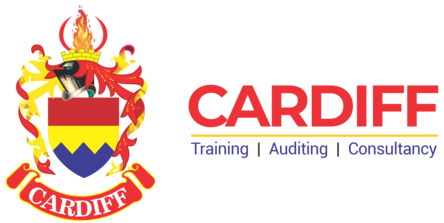The current versions of the NEBOSH National and International Diplomas in Occupational Health and Safety date from 2015 and the Unit DNI written assignment that accompanies both has been in use since February 2017. The Unit DNI (Unit D for National and International) assignment is very different to the old Unit D or ID used under the old syllabuses. Consequently if you followed the old guidance and wrote a Unit D report that might have passed under the old National syllabus you would not achieve a pass under the new system. This is because the content of your report would be completely wrong. The report writing skills that you have to demonstrate are the same – it is the topic that has changed.
You can access the guidance at any stage of your course and you can make a start on the assignment whenever you want to during your Diploma studies. Whilst it is true that most students work on Unit DNI after completing the other three units of their course there is nothing to stop you from working on the assignment right at the start or at points during the course. Because the assignment makes significant reference to topics covered in Unit A/ IA it makes good sense to work on the assignment during or at the end of that unit. The guidance published by NEBOSH is very comprehensive and gives a clear indication of what the examiner want in terms of structure, content and presentation. It is not my intention to repeat the guidance in this blog. Instead it might be useful to make a few key points to sit alongside the official NEBOSH guidance.

What is included?
Planning
Proper planning and preparation prevents a poor performance (yes there is a seventh P but I missed it to avoid offending anyone). You have to have a plan for your report and this must be based on a detailed understanding of the official guidance. So read that NEBOSH document as if it was an exam question. Hang on every word and analyses every sentence. It’s all there for a reason; to direct and constrain you. So follow it to the letter. You cannot afford to skip this crucial step. Reading the guidance and planning your report structure takes time. Carrying out investigations in your workplace to gather evidence for the assignment takes time. Writing it up and then editing your draft work takes time. So plan to give yourself plenty of time. If you are intending to finish a unit exam and then work on Unit DNI I would recommend that you give yourself at least three months. It takes a spectacularly strong candidate to do a unit exam in July and submit the report in August and pass both.
Your Workplace
Unit DNI must be completed in a real workplace. Ideally your real workplace, though it may be possible to carry out the assignment in a workplace that is not your own if circumstances necessitate it. This workplace must be big enough and complex enough to require some form of safety management system. A small company employing two or three workers would not be appropriate because most of the elements that must be examined during the assignment would not be relevant in such a small company. As you read the guidance you will see that there must be a need for leadership and worker consultation, etc. Very small workplaces do not fit the bill.
Structure
The structure of the report is clear from the guidance. But you must make sure that this structure is followed and that your reader can see the structure in the report. So you have to use presentation methods that will show your reader the structure. Present a table of contents. Use headings and sub-headings to demark the main sections of the report. Number the headings and sub-headings. Break your text up into paragraphs and as you move from one topic or idea to the next use paragraph breaks to show the change in focus. Do not number individual paragraphs.
Presentation
The guidance specifies that your executive summary must be presented using Arial 11. This is a standard business font and size – so why not use it for the rest of the text in the report? Make sure that your headings and sub-headings look like headings and sub-headings. Use slightly larger font size. Embolden the text. Or underline it. Or both. Use figures and graphics to present complex or numerical data. Why write a hundred words about a safety management system when one figure paints the picture? Why present a table of data when a graph shows the relationships? Every table or figure must have a title. Standard protocol is that the title goes above a table, but below a figure. Reference figures and tables from external sources. Avoid the use of presentation gimmicks such as generic pictures or font color changes.

